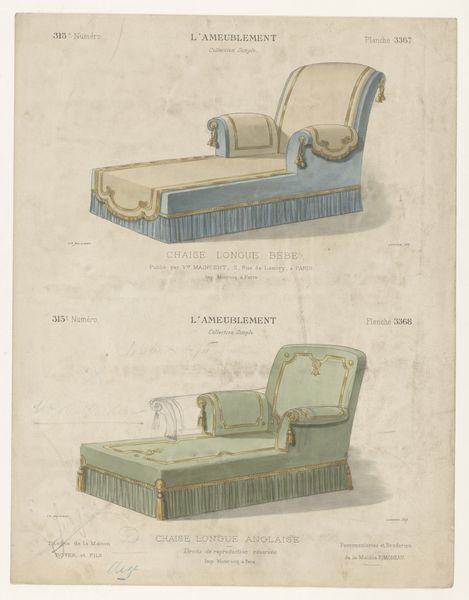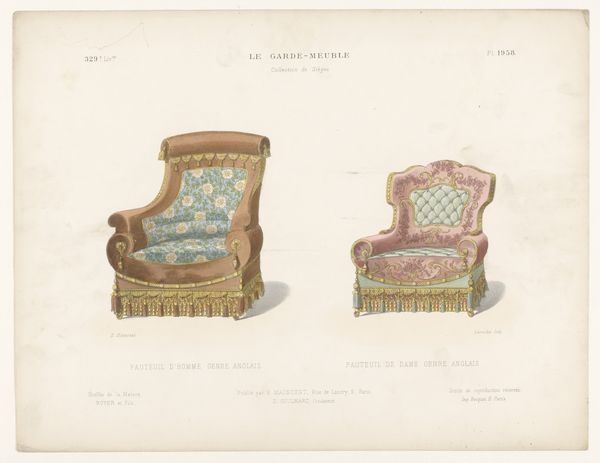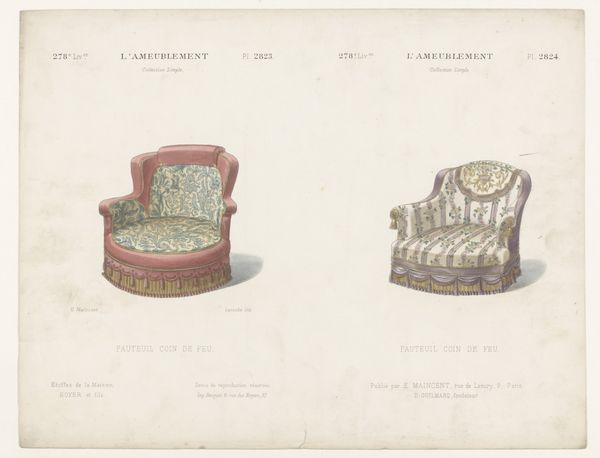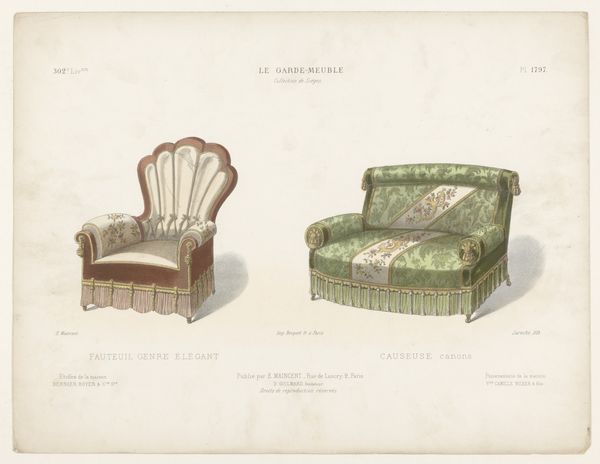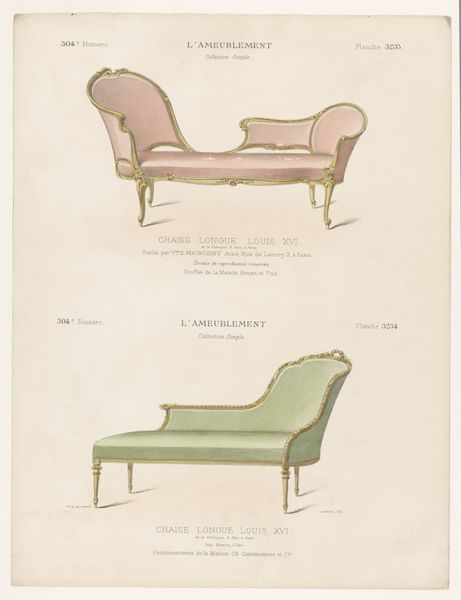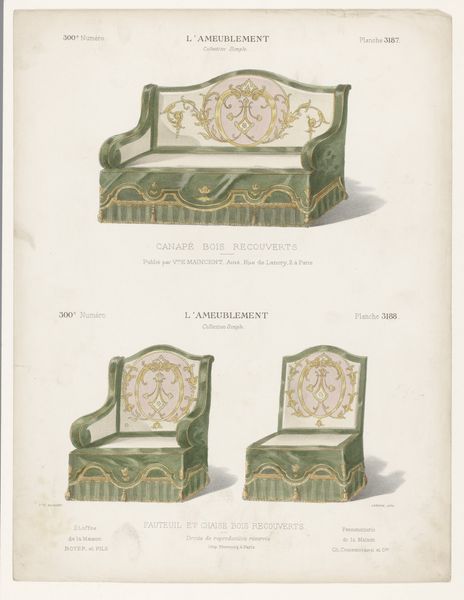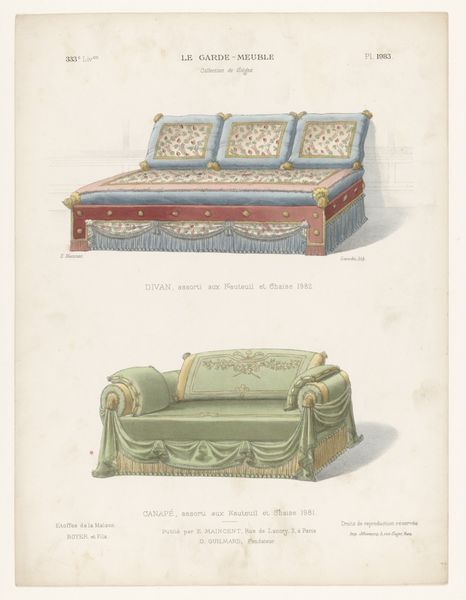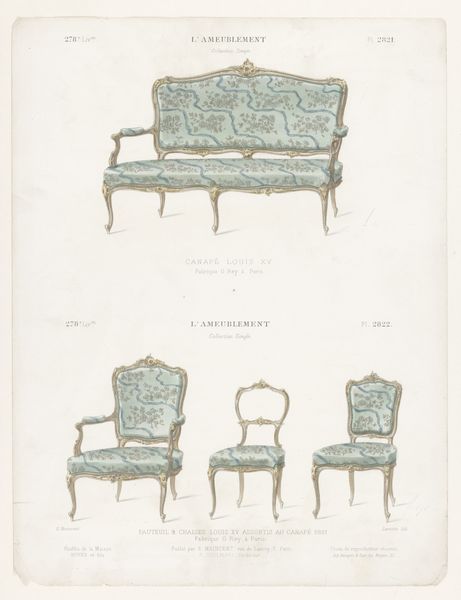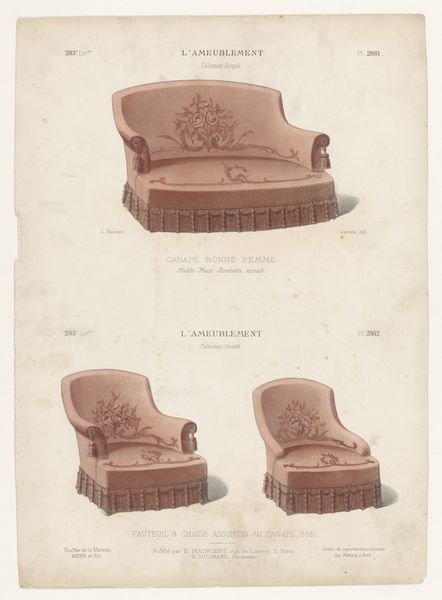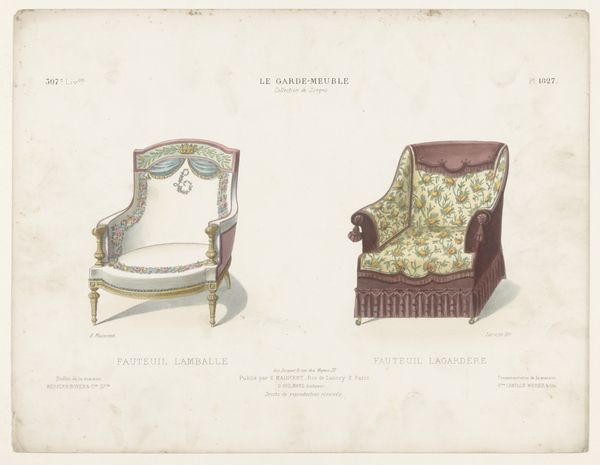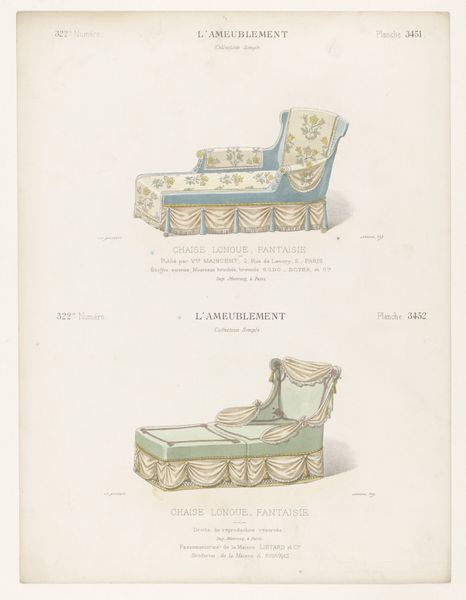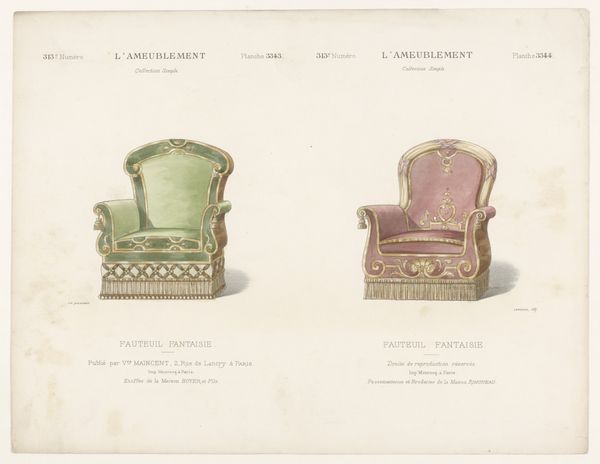
drawing, mixed-media, print, paper, pen
#
drawing
#
mixed-media
# print
#
paper
#
pen
#
academic-art
#
decorative-art
Dimensions: height 360 mm, width 273 mm
Copyright: Rijks Museum: Open Domain
Curator: This work presents a collection of furniture designs, specifically chairs and footstools, rendered in mixed media around 1885-1895. The piece is titled "Twee fauteuils en twee poefen" and has been attributed to Léon Laroche. What strikes you immediately? Editor: Well, I'm immediately drawn to the consistent use of fringed trim. It feels almost ceremonial, or like the furniture is trying to subtly masquerade as something more regal, more important than just seating. Curator: That's a very astute observation. Considering the context of the late 19th century, we're witnessing a period where industrialization met a nostalgia for aristocratic aesthetics. Decorative arts like these often blurred the lines between mass-produced items and handmade luxury, reinforcing social aspirations and perceived upward mobility. Editor: Yes, I can see that. The fringe could be viewed as a symbol of status. But it also seems impractical, doesn't it? Reminds me of valances! A covering to hide structure. An assertion of refinement for perhaps those still trying to be refined, it can signal social identity for those aspiring toward elegance. Curator: Indeed. There's also an undeniable link here to prevailing fashions and social customs. These designs weren't created in a vacuum; they reflect how designers were trying to make spaces within homes more welcoming and decorative as industrialism developed the nuclear family in its own homes, not with servants who once occupied it. Consider these designs within their place in the history of domesticity. Editor: Looking at the forms and detailing, the ornate upholstery patterns coupled with classical lines really highlight a sense of established taste, or a longing for tradition and historical precedent. Curator: Absolutely. Laroche here doesn't only portray design—he reveals a societal aspiration. The act of visualizing and circulating these designs democratizes access to aesthetic ideals, playing a crucial role in shaping consumer tastes and, ultimately, solidifying social hierarchies. Editor: It's interesting how design, even represented in what feels like a relatively straightforward catalog, speaks volumes about ambition and our eternal attempts to communicate where we belong. Curator: Precisely. And this catalog reveals not just individual consumer desire but wider shifts in class structure and society and aspiration in turn-of-the-century domesticity.
Comments
No comments
Be the first to comment and join the conversation on the ultimate creative platform.
